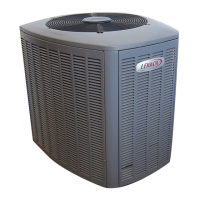
Do you have a question about the Lennox XP16 Series and is the answer not in the manual?
| Type | Heat Pump |
|---|---|
| Refrigerant | R-410A |
| Stages | Two-Stage |
| SEER Rating | Up to 17.2 |
| Compressor Type | Scroll |
| Warranty | 5-Year Limited Warranty on compressor, 5-Year Limited Warranty on covered components. This product may be eligible for valuable 10-Year Limited Extended Warranty coverage with product registration. |
Provides information on identifying the unit's serial number.
Details the technical specifications of the XP16 series units.
Lists the recommended torque values for various fasteners.
Provides guidance on using a manifold gauge set with HFC-410A systems.
Explains how to use the liquid and vapor line service valves for system operations.
Details the procedure for operating angle type service valves.
Details the procedure for operating ball type service valves.
Explains how to access the service port and reconnect caps.
Describes how to properly reinstall stem caps for service valves.
Factors to consider when positioning the outdoor unit for optimal performance and sound.
Guidance on installing the unit on a ground-level slab.
Instructions for raising the unit using support feet extenders.
Guidelines for mounting the unit on a roof, including clearance and wind barriers.
Procedure for safely removing the louvered panels from the unit.
Procedure for correctly reinstalling the louvered panels onto the unit.
Procedure for flushing the line set and indoor coil with refrigerant.
Instructions for installing the indoor expansion valve.
Guidance on correctly mounting and insulating the sensing bulb.
Procedure for connecting the equalizer line to the expansion valve.
Procedure for testing the line set and indoor unit connections for leaks.
Steps for evacuating the system to an absolute pressure of 500 microns.
Guidance on sizing circuits, installing disconnect switches, and wiring.
Information on using the provided 24VAC transformer for control power.
Recommendations for installing the room thermostat.
Details on making 24VAC control wire connections to the unit.
Procedure for starting up the unit after servicing or when void of charge.
Procedures for connecting gauges, checking airflow, and adjusting refrigerant.
Procedure for charging the unit using the weigh-in method.
Procedure for charging the unit using the subcooling method.
Procedure for charging using normal operating pressures and approach.
Reference table for normal operating pressures under various conditions.
Guidance on adding or removing refrigerant for specific models.
Procedure to adjust for optimal airflow across the indoor coil in cooling mode.
Method to calculate blower airflow (CFM) in heating mode.
Steps to calculate the total refrigerant charge for an empty system.
Procedure for subcooling charge in cooling mode.
Procedure for subcooling charge in heating mode.
How the second-stage compressor operates in heating and cooling.
Information regarding thermostat requirements and functions.
Details on the emergency heat function and its application.
Information about the unit's filter drier and replacement.
Overview of the defrost system and controller components.
Details connections, settings, and lockout conditions for pressure switches.
Explains sensor types, locations, and their role in defrost operation.
Coil sensor function, fault conditions, and resistance values.
Discharge sensor function, faults, and lockout codes.
Describes shunt settings, delay mode, and operational modes.
Explains how to initiate test events using jumpers.
How the system initiates defrost based on frost accumulation.
How time elapsed triggers a defrost cycle.
Conditions for initiating, holding, and ending a defrost cycle.
Identifies the key components of the blower motor assembly.
Explains the operation of the variable speed condenser fan motor.
Describes the power-up sequence and potential issues for the motor.
Details the motor's start-up process and safety features.
Troubleshooting steps for when the variable speed fan motor does not energize.
Instructions for replacing the fan motor, including shaft mounting.
General maintenance checks to be performed on the system.
Cleaning and inspection procedures for the outdoor unit and coil.
Specific cleaning advice for outdoor coils, especially in coastal environments.
Checks and cleaning procedures for the indoor unit components.
Details the sequence of operation for cooling modes.
Details the sequence of operation for heating modes.
Checklist for evaluating compressor field operational performance.
Checklist for initial start-up and performance verification of the XP16 unit.

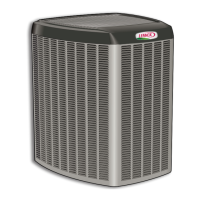
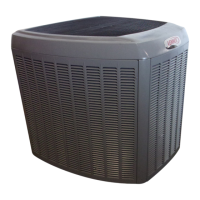
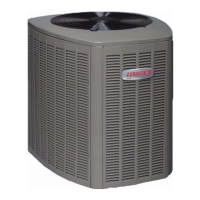



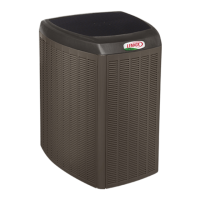

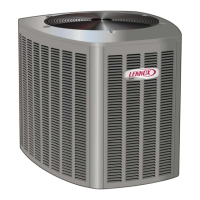

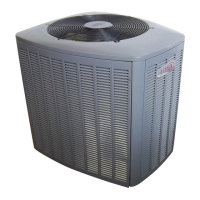
